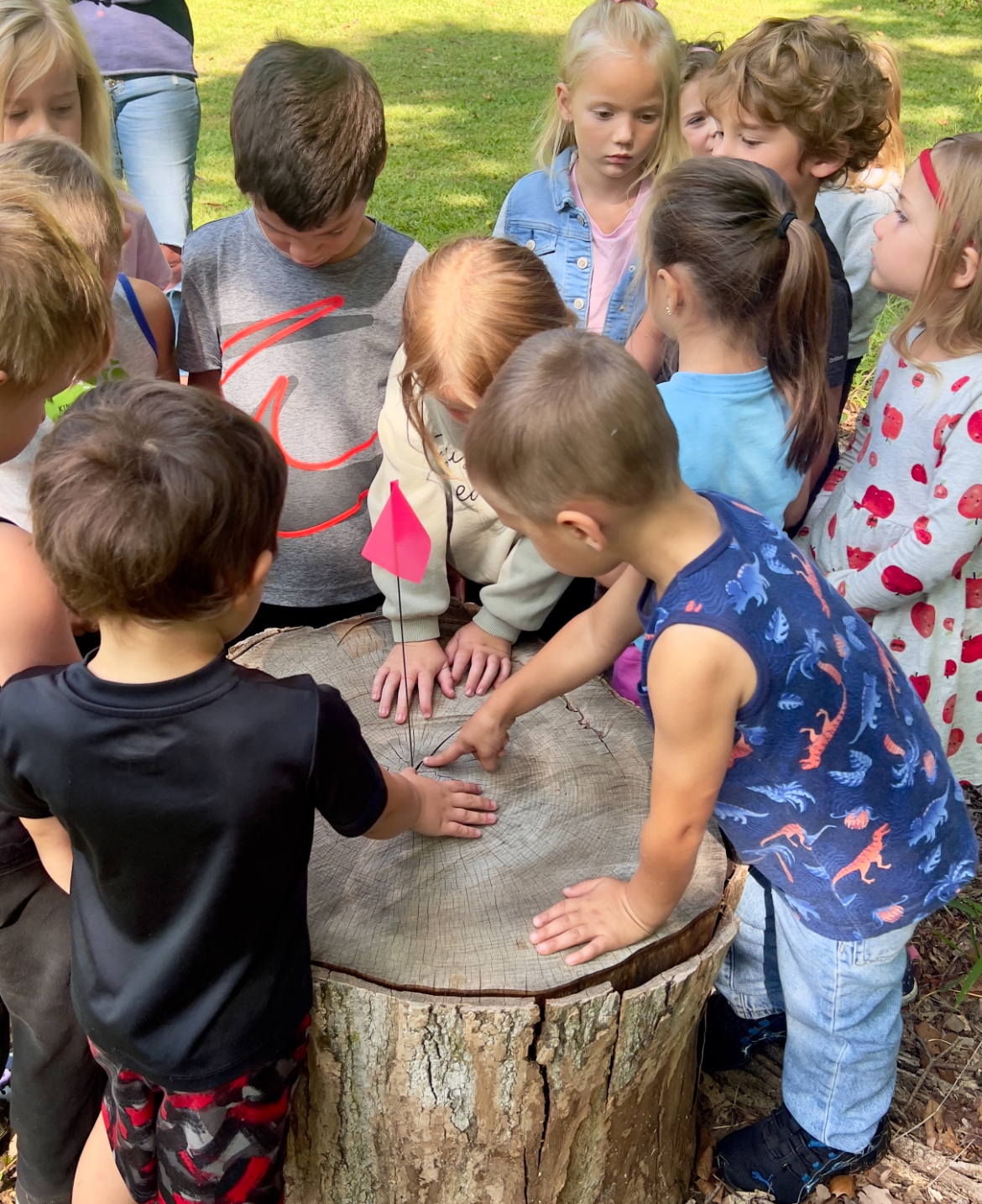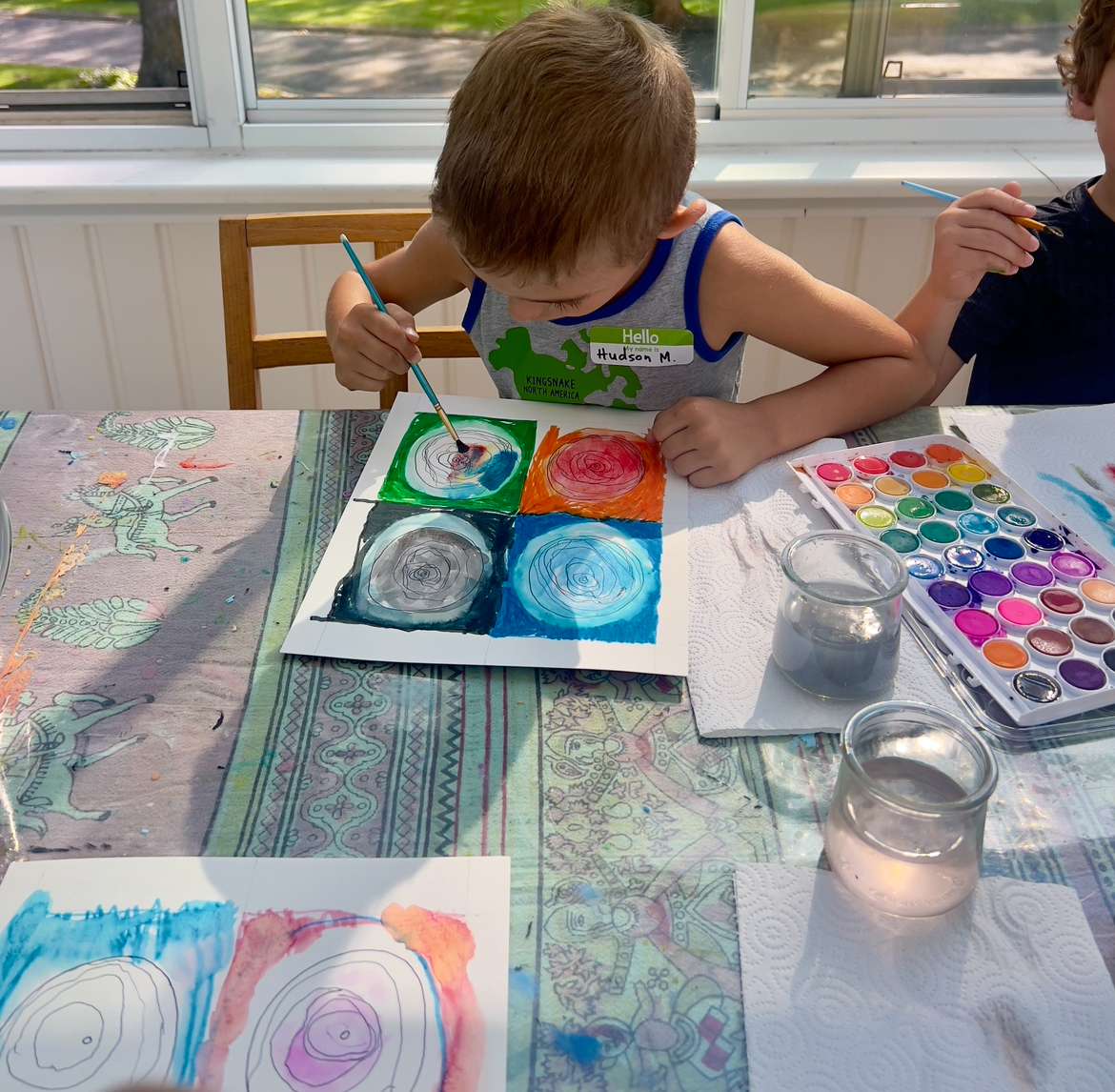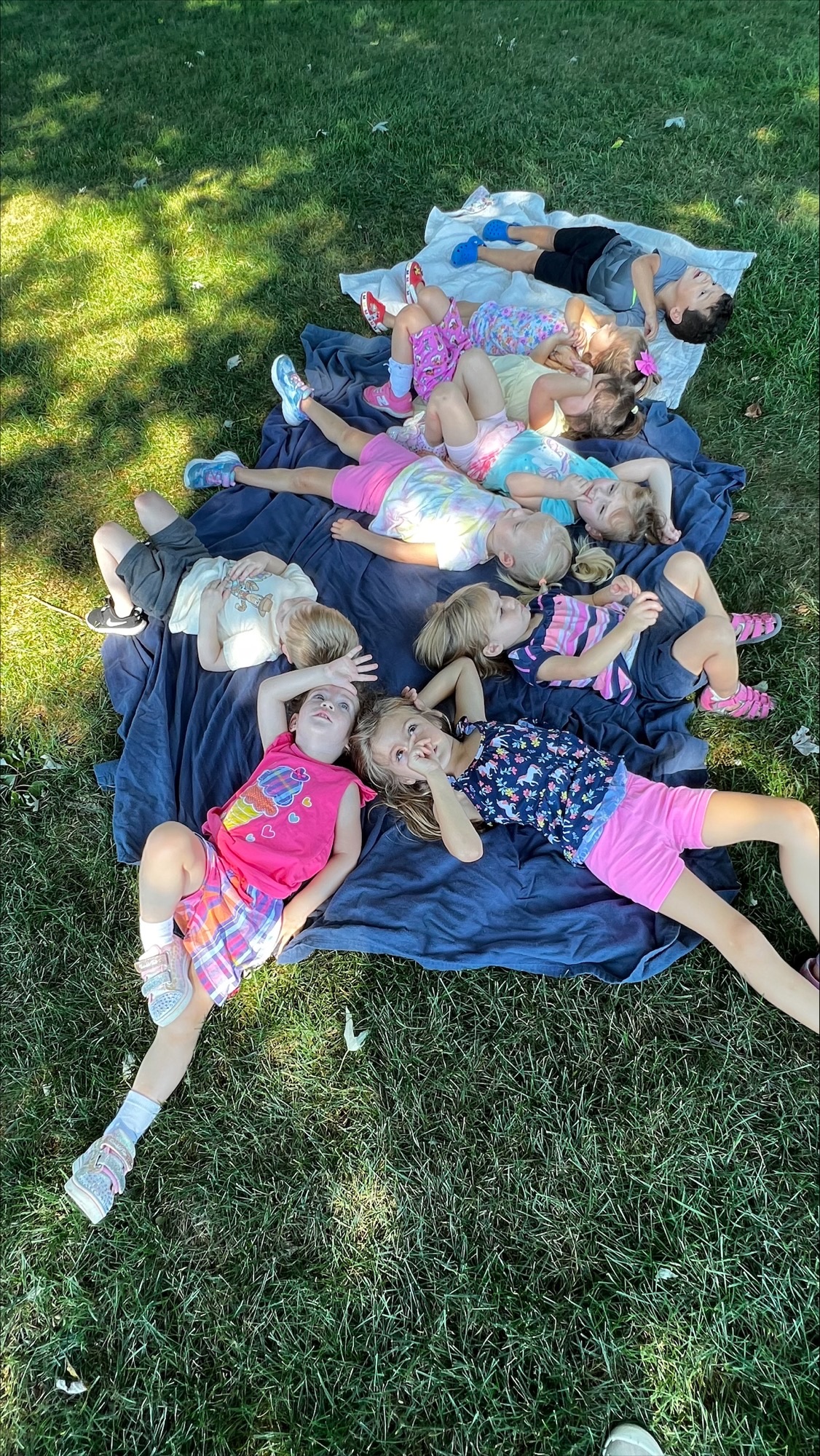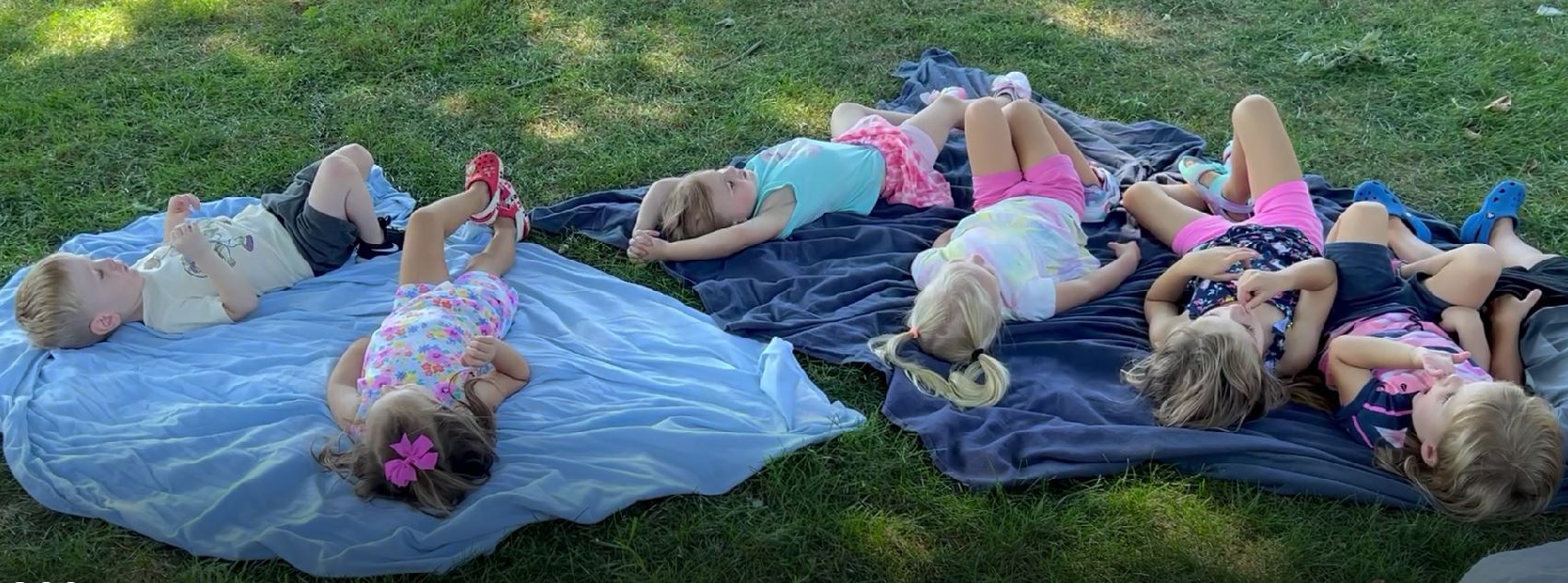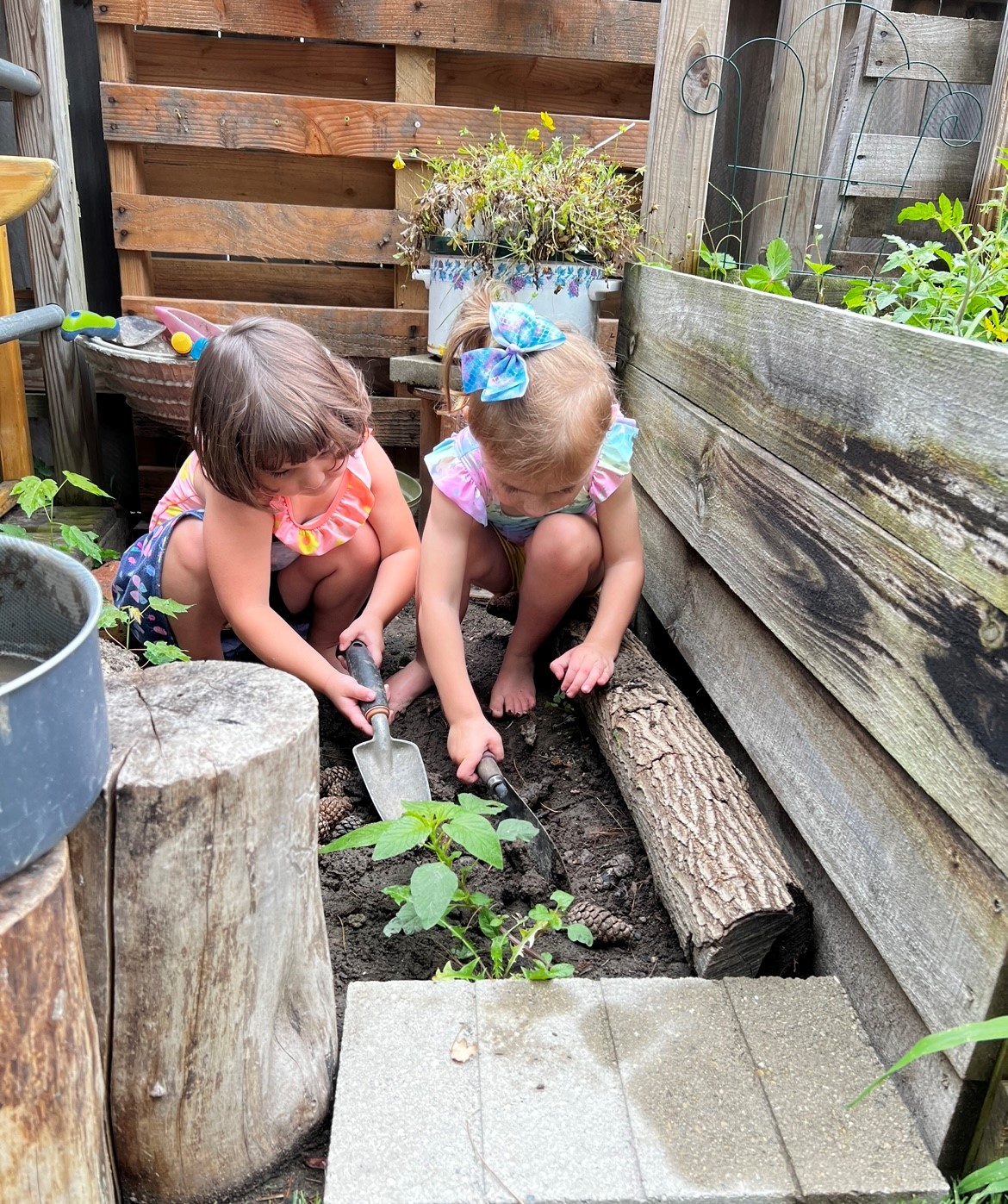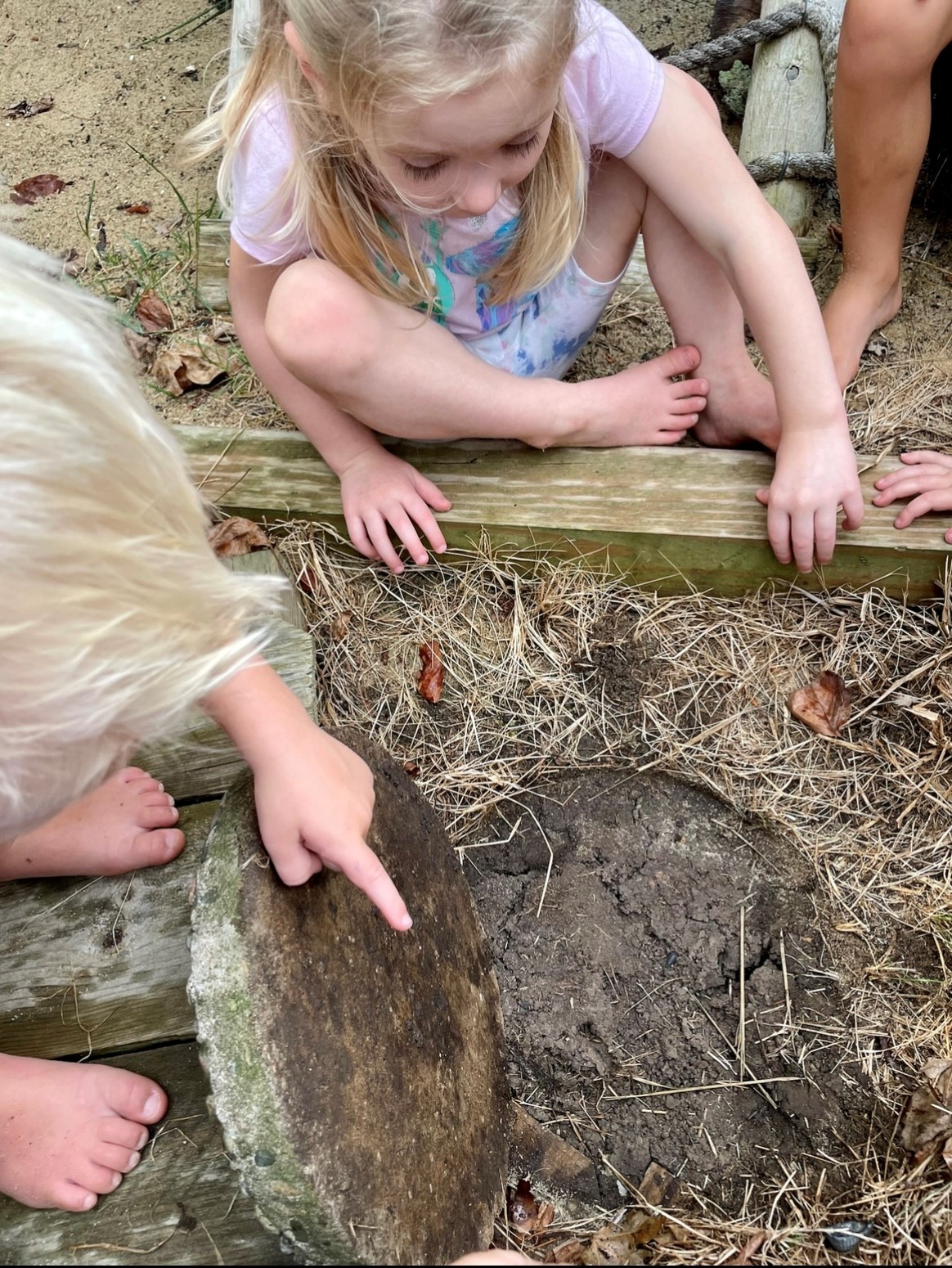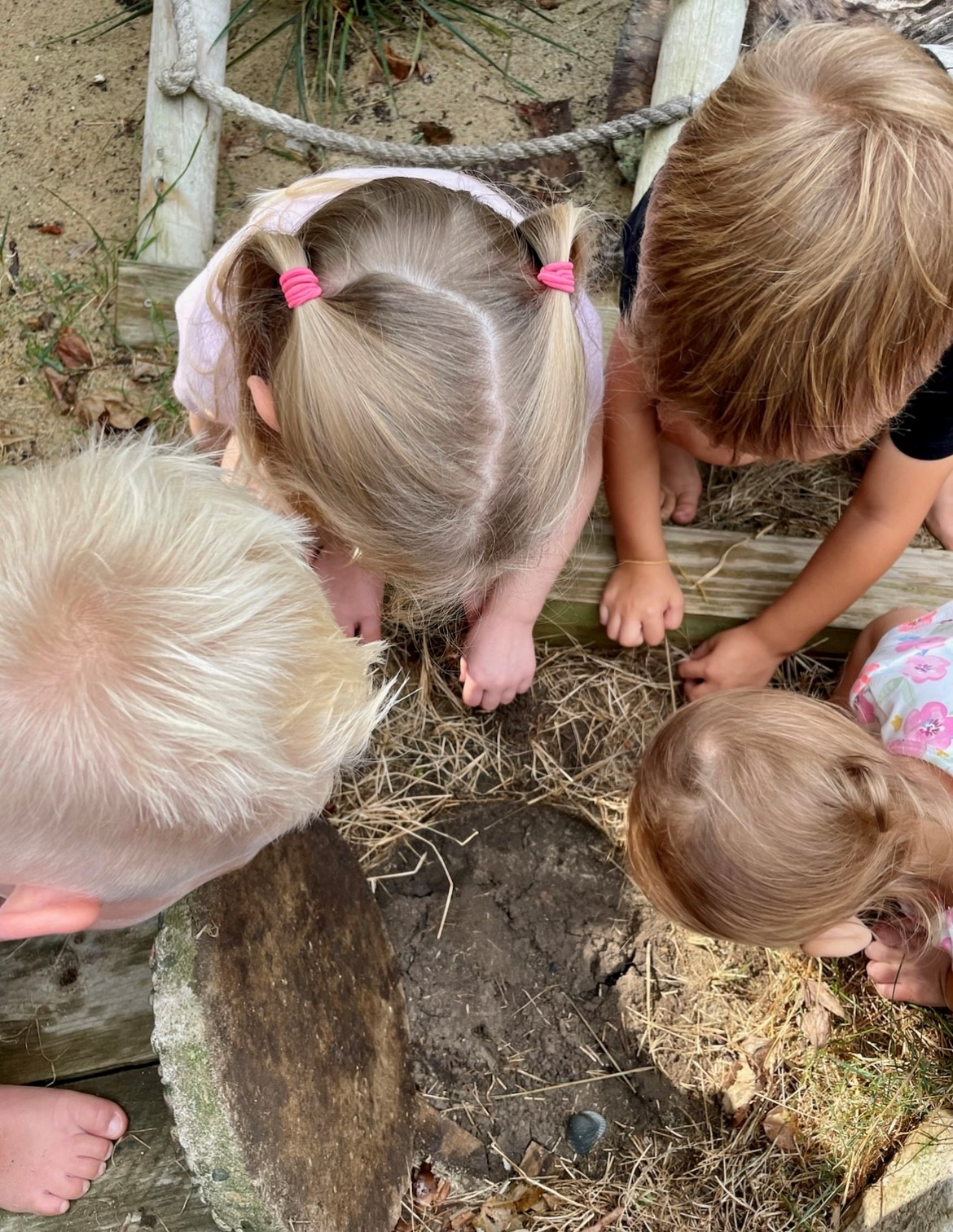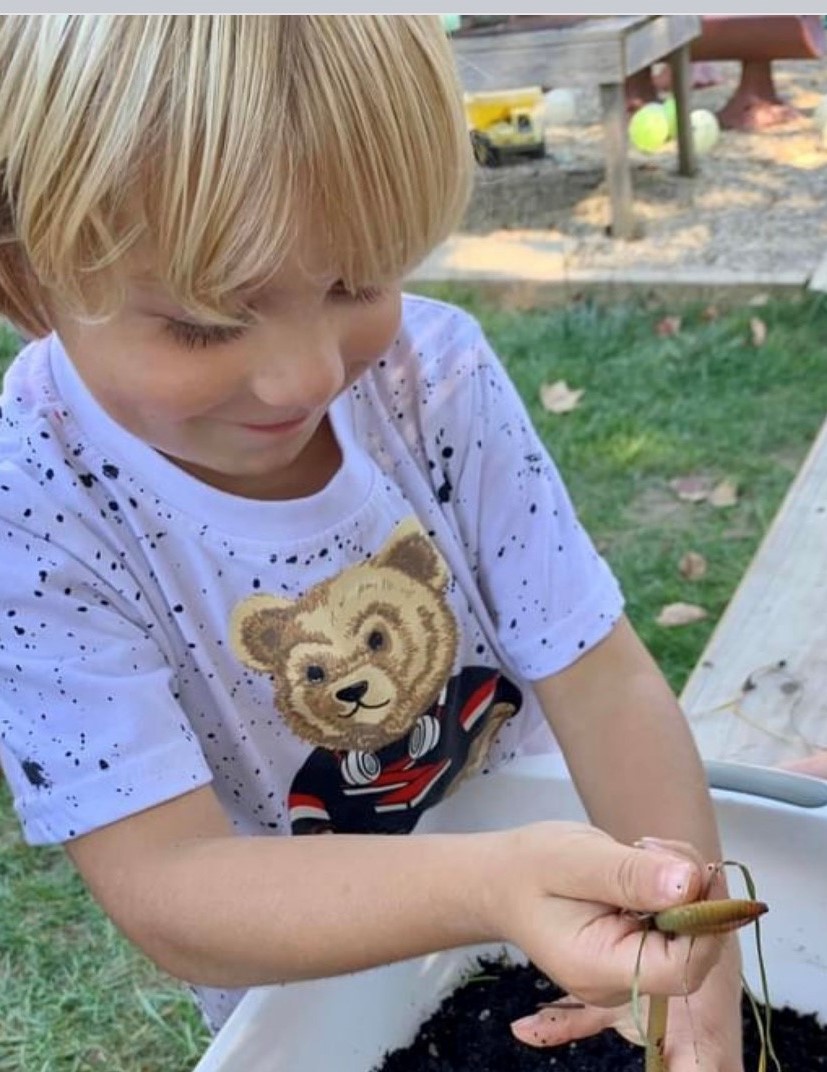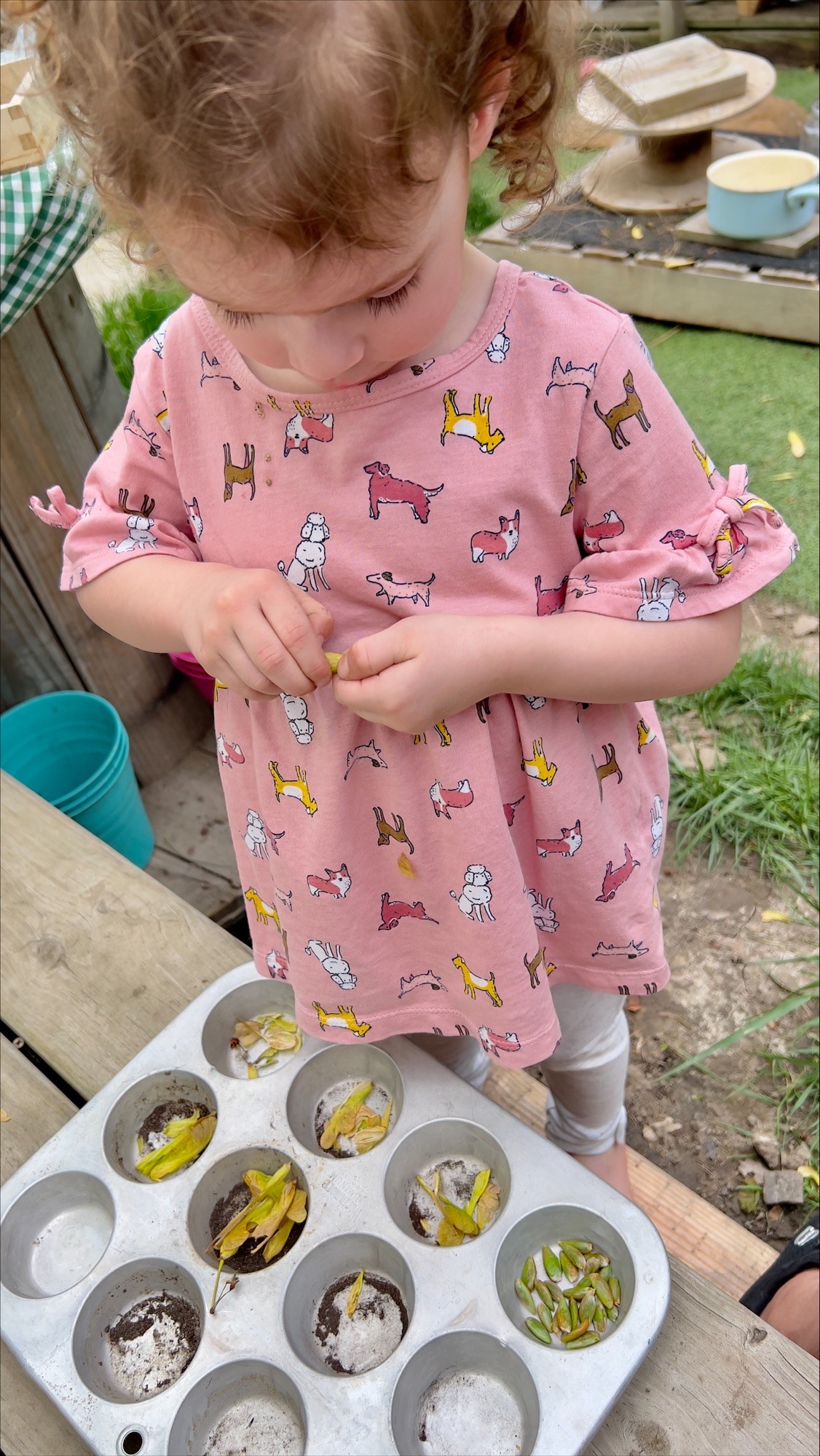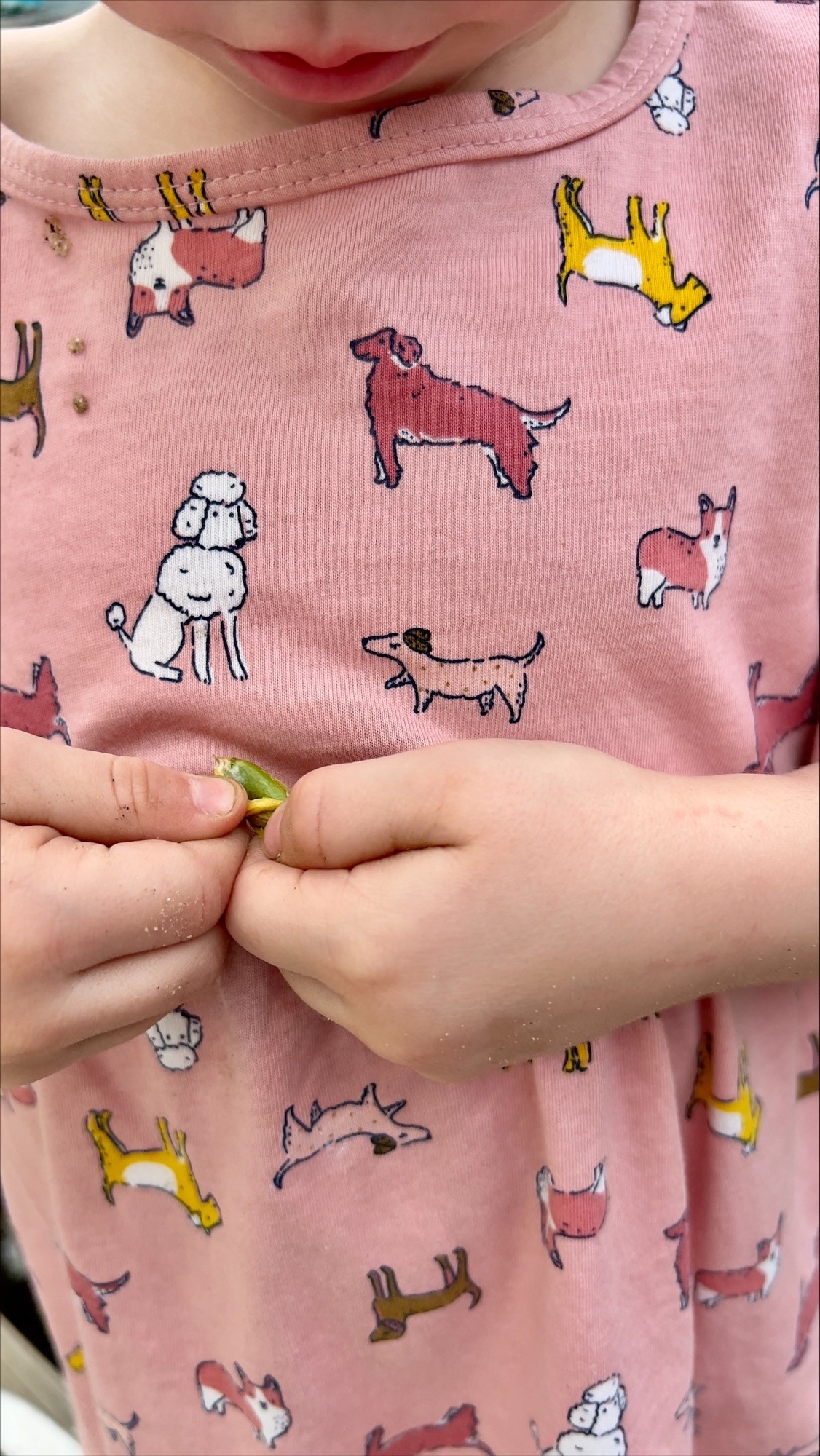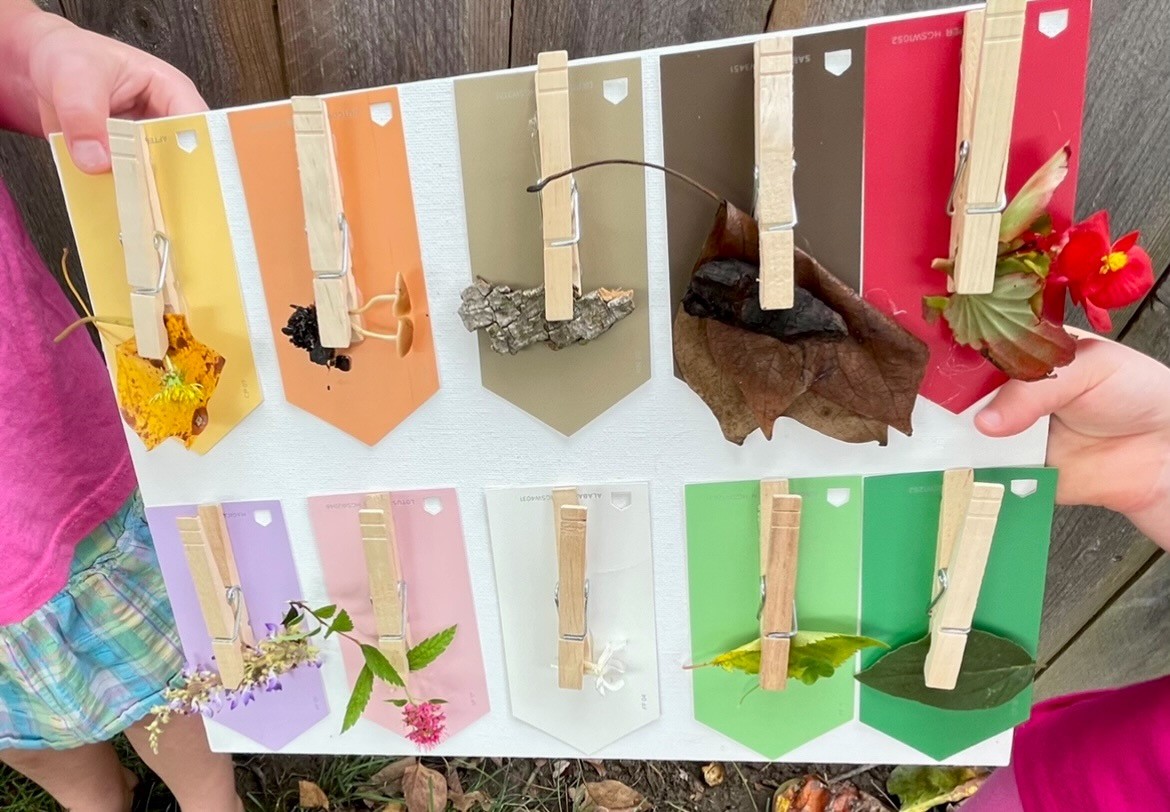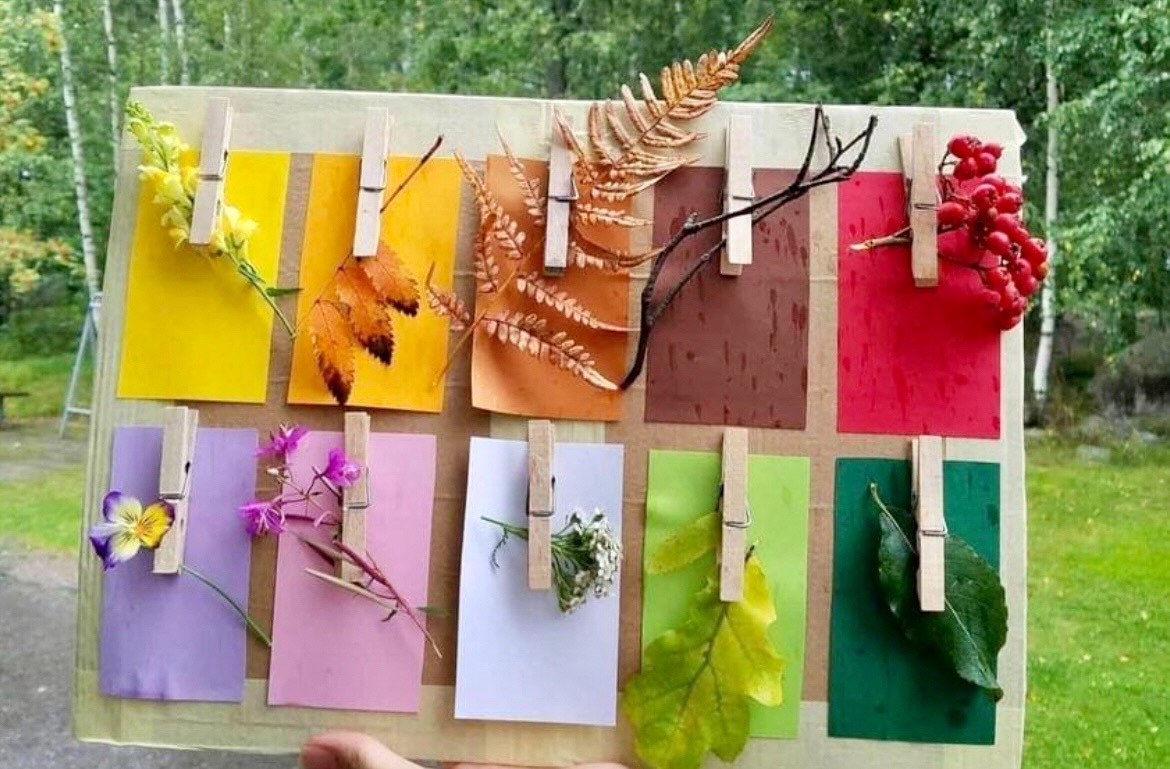There’s so much more to learn from tree rings than just the tree’s age, making it a fantastic nature study opportunity for children! This activity can be done in any season, as you only need a stump or a wood slice.
Before you get started, here are some basics about dendrochronology.
If you want to get fancy, the scientific term for the study of tree rings is “”dendrochronology.”” At its most basic level, this involves dating a tree by counting its growth rings. However, it’s also about studying the data from observing these rings.
How to Count Tree Rings
When examining a tree stump, you’ll notice thin lines and more expansive spaces between the rings. Trees add a new layer of growth every spring and summer. Trees grow much faster during the spring, so the broader spaces represent this spring growth.
In contrast, the summer (and sometimes fall) growth is slower, resulting in thin lines. Together, these two types of markings represent one year of growth. To get an accurate estimate, focus on counting only the thin lines.
What to Look for in Tree Rings and Their Meanings
When examining tree rings, pay attention to their width. If you notice some rings considerably wider than the others, this likely indicates a year with ample rainfall and growth. In contrast, if there are years where the tree rings are particularly thin, this suggests a drought, bug infestation, or some other factor that stunted growth.
Dark, black marks may indicate that the tree survived a forest fire. Additionally, if the rings are wider on only one side of the stump, it might suggest that something pushed against the tree, causing it to develop extra resistance wood on the opposite side.
Once you discover a tree stump or a tree slice, act like detectives and learn as much as you can from the tree rings. Here are some questions to consider:
- How old is this tree?
- Does it look like the tree experienced any sort of injury? (Forest fire, bug infestation, etc.)
- Ask children to make up and tell a story about the tree’s life!
While walking, try to find several different stumps to compare. Look for the oldest tree or the stump with the most unusual shape!
Extending the Learning
I love to pair related books with activities, so we read *The Berenstain Bears and Too Much Birthday.* It has a couple of pages where Papa Bear cuts down a tree, and the cubs count the rings! This was helpful for the three-year-olds, as it aided in understanding the concept and generated excitement about learning.
You can also extend this learning by incorporating the arts as I did. Provide children with small cardstock, markers, and watercolor. Ask the children to draw their observations of the tree rings using these materials.
I loved how the artwork turned out!
Looking for an interesting textural addition to your play dough? Add birdseed and try this no-cook recipe, written to use with young children. Note: Skip the food coloring you might normally use to allow children to really notice the distinct colors of each type of seed.
- 2 ½ cups All-Purpose Flour
- ¾ cup Salt
- 2 tablespoons Cream Of Tartar
- ¼ cup Vegetable Oil
- 1 ¼ cups Boiling Water
- 2 cups birdseed
- Help children measure the dry ingredients.
- In a large bowl, have each child add an ingredient then take turns whisking together the flour, salt and cream of tartar.
- Adult adds the vegetable oil and boiling water, and using a spatula, mix until combined.
- Once it’s cool enough to handle, bring the children back together to knead the playdough in the bowl until it becomes smooth, about 2 minutes. (It may appear wet at first but will dry as you knead and the water gets fully absorbed.)
- Form the dough into a “bowl” and add birdseed to the center. Help children incorporate the seeds into the dough.
There are lots of common birds in Indiana that stick around for winter. Many of these are colorful favorites that evoke a winter feeling. Our two picks were Cardinals and Blue Jays.
Bird feeders are lively places during the winter months and their presence is important. Feeding winter birds can be a fun and educational activity for kids; they can learn about different species while also learning about their habitats, diets, and winter survival tools.
How We Explored Our Winter Birds:
- Create a bird observation center in your play area by setting up bird feeder stations. You can build your own from recycled materials such as milk cartons, recycled jugs or pinecones or purchase pre-made bird feeders.
- Next decide what type of bird seed you want to use. Investigate what types of food will attract which birds, and offer the children a choice of which they’d like to try– or fill one feeder with one type, and a second with another, and encourage the children to compare which birds they see around each.
- Placing feeders by a window for indoor viewing is an excellent idea for those cold winter days. You can create a chart on a whiteboard or large sheet of paper so they can check off birds they see on it.
- After a few weeks, compile your observations looking for patterns in birds observed at your feeders at different times of the day. Discuss the results.
For more bird-bassed fun, try these:
- Make bird seed play dough for your table activity or sensory table. Try picking up seeds with different shaped tongs and notice which is the most successful for different kinds of seeds.
- Go on a bird feather hunt and research to identify the bird it came from. Record children’s hypotheses and look for a live match!
Early Childhood Education can have a lot of buzzwords and misunderstandings. This “Philosophy Spotlight” series intends to introduce you to the origins of a number of currently used philosophies directly from the writings of their founders and accomplished practitioners, as well as modern practices and ideas associated with these philosophies. Note that many of the philosophies and philosophers we reference in the US are Euro-centric in origin. I will do my best to integrate philosophies of development and learning from a more diverse body of knowledge, for the benefit of all children and providers. You’ll notice a significant amount of overlap between philosophies, as well as some stark differences. Use these articles to consider your own approach to early education, and maybe refine how you see you work and design your program. These are intended to be broad overviews; please see the references if you’d like to learn more about each one!
Modern Regulating Bodies/Standards:
In the UK, there is the Forest School Association that accredits Forest Schools/Nature Based Programs
Eastern Region Association of Forest and Nature Schools offers teacher certifications.
There is no requirement to be affiliated with these or other regulating bodies to call a program a Forest or Nature School.
Origins, Theories and Theorists:
Forest schools have existed around the world since the early 1920s, with Sweden and Denmark beginning the practice as a type of informal early childhood education. It has expanded substantially in recent years, notably since 2012 and another expansion during and after the start of the COVID-19 pandemic, particularly in Western Europe, Eastern Asia, and the United States.
From UK Forest School:
- Forest school is a long-term process of frequent and regular sessions in a woodland or natural environment, rather than a one-off visit. Planning, adaptation, observations and reviewing are integral elements of Forest School.
- Forest School takes place in a woodland or natural wooded environment to support the development of a relationship between the learner and the natural world.
- Forest School aims to promote the holistic development of all those involved, fostering resilient, confident, independent and creative learners.
- Forest School offers learners the opportunity to take supported risks appropriate to the environment and to themselves.
- Forest School is run by qualified Forest School practitioners who continuously maintain and develop their professional practice.
- Forest School uses a range of learner-centered processes to create a community for development and learning.
Values:
Providers with outdoor/nature based programs value being outdoors in almost all weather.
Leaving nature as it is– stewardship of nature.
Following the seasons; helping children observe the way the world changes over time and in predictable ways.
Some nature programs teach children from a young age how to use a campfire to cook or use other tools to interact with the outdoors. A degree of risky play is often a draw of Forest Schools or Nature Based Programs, whether that’s allowing children to climb trees or rocks, or carry and play with fallen sticks.
A Forest School is distinct from other outdoor play due primarily to time spent outdoors, in amount each day as well as the length of time in months or years in one place. There is also great freedom of time and flexibility of schedule, rather than preplanned and limited time to be outdoors.
What You Might Observe in a Forest School:
Children outside in all weather conditions.
Children out of view of supervising adults.
Adults setting children’s boundaries at the beginning of each session, reminding them how far and in what areas they can explore, what the signal is to return, and where to come back together at that signal.
Risky play, including children using tools.
Few to no traditional toys or play materials.
Influence on Modern ECE Programs at Large:
The Forest School movement has drawn attention to the benefits of time in nature for children and people of all ages, in physical health, mental health, and cognition.
Questions for Your Reflection:
How do I use my outdoor space and time?
What opportunities do children in my program have to notice daily, weekly, and seasonal changes?
What natural resources are available to me and the children in my care?
Looking at the sky is a simple and relaxing activity that fosters observation and creativity skills. It can change your perspective of the world as you have to explore a broader view. Children can see different animals or flying objects, some we may have missed if we don’t look up. They can also observe cloud formation and shape. Develop their creativity in describing what clouds look like and the stories the clouds are telling us. Next time you are outside, encourage children to look up and explore the sky. You can invite them to this activity by simply laying down a blanket or, if available, providing binoculars!
One of our favorite and must exciting activities is exploring worms. To start, we first figure out where worms live; often, children have seen worms out on the sidewalk or crawling on dirt and have a good idea of where to search for more. Exploring all the places in our outdoor space where they can live—asking children where they saw them and where they could have crawled under. By taking on this approach to finding the worms, we set the groundwork to learn more about worms’ habitat. Plus, it is fun to look for clues.
Once we decide where to look, the fun and messy part starts, children can use their hands, or I provide shovels so they can dig in the dirt. Figuring out what children are comfortable with is key; some will love to touch the dirt, while others may not want to. The same can be said for when we find a worm. Some children are curious and want to pick them up immediately. Others may want to see them from afar. We give children space and allow them to go at their own pace in the exploration.
If they are touching the worm, we talk about kindness, responsibility, respect, and compassion for the worm. Years ago, when we saw a worm or bug, I would immediately say, “look with your eyes, we might scare it or hurt it”. Over time I have learned the importance of having children experience holding insects, animals, and materials. I had to shift my thinking, and instead of avoiding the touching. I began to trust the children. Talking with them about how we treat animals and how we want to make sure we are caring for nature. Allowing them to take responsibility and feel proud of how they care for others helps them develop a great sense of self.
Maple samaras or helicopters are winged seeds of maple trees; because of their shape, it is fun to see them fall and twirl in the air. Stephanie Mckinstry of My Caterpillar Clubhouse shares fun ways to utilize these seeds in your program.
Start by collecting the leaves, having children gather as many leaves as possible, and then setting them out so they can explore.
- Encourage children to toss them to see them twirl or to separate the leaf from the seed.
- Opening the seed and observing what they see, feel, and hear. You can also add a muffin tin or container to separate the leaf from the seed.
- They are a great addition to the mud kitchen, or incorporate them in your indoor dramatic play area.
- Use the seeds to count or create patterns.
- Once dried, they are an excellent collage material and can easily be glued or painted.
Get creative and encourage the kids to use their imagination!
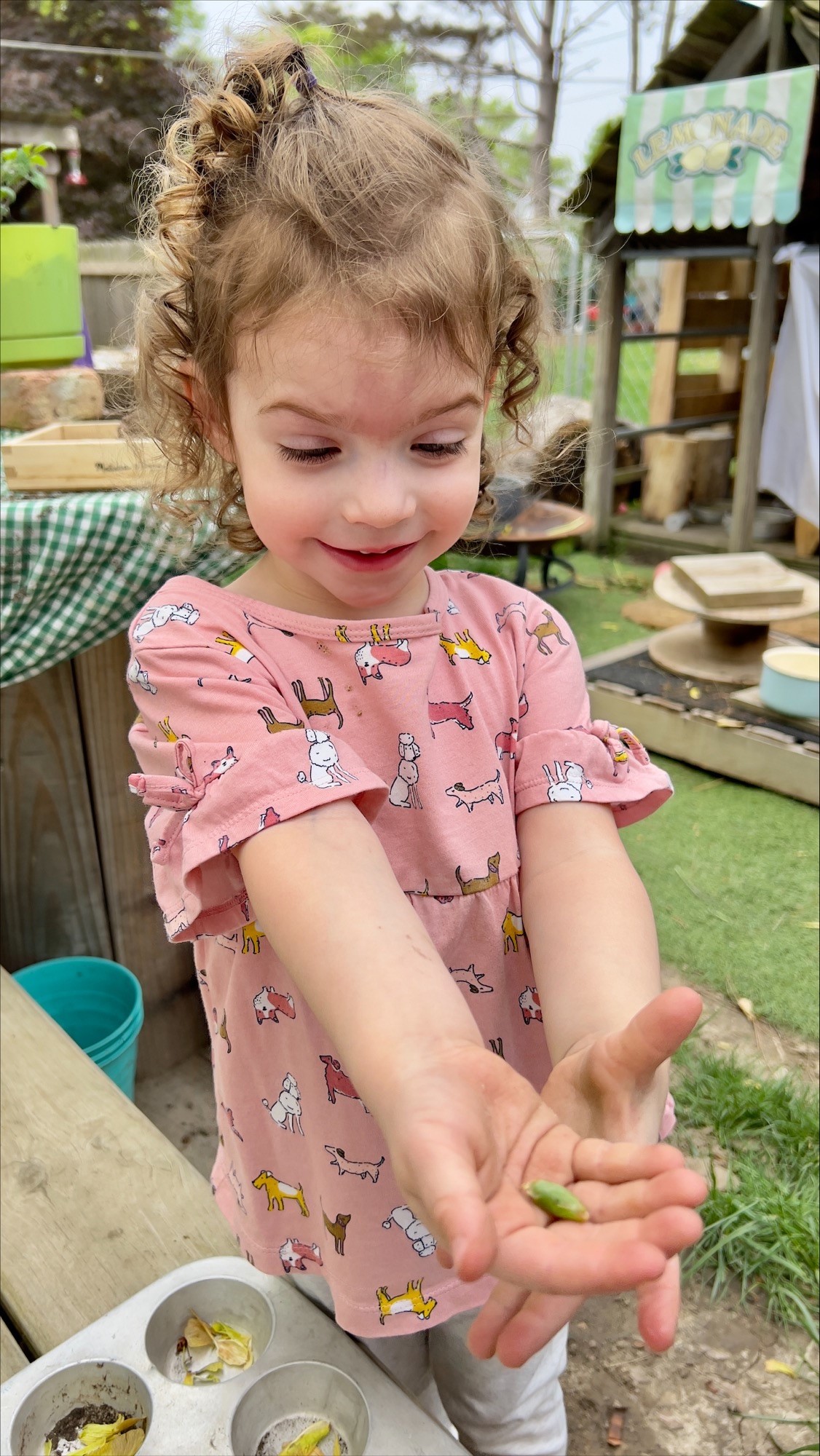
Gardening has many benefits for young children, including developing responsibility skills , fostering a sense of community, and developing confidence as they care for the plant and observe the growth. To begin, all you need are a few materials, and gardening doesn’t need an ample outdoor space; you can easily create a small indoor garden to fit your program.
Stephanie Mckinstry from My Caterpillar Clubhouse, a Certified Nature Explore Classroom, shares more benefits of gardening, how she begins her garden indoor and transfers the seeds to her outdoor garden. Watch below.
Stephanie Mckinstry from My Caterpillar Clubhouse, a Certified Nature Explore Classroom, shares how she incorporating books and images of nature into her program. Listen below for her tips.
Creating a nature scavenger color-hunt game is a fun nature-themed activity to get your group outdoors. This is an activity that, no matter their age, they will stay busy and observe as they play creatively and explore outside.
You can use a canvas panel or a piece of cardboard, I would say roughly the size of a medium-large pizza box. You then want to take 10 color paint swatches. I like to take a walk in my space and quickly take 10 pictures to match when I get to my hardware store. This is something that will, of course, change with the seasons.
We did 10 colors; my group is 2.5-4 years old. It’s entirely up to you how you choose to do this; you can cut smaller pieces of cardboard and give each child 5 colors; you can do it as a group as we did. You can add shapes by cutting the paint sample into a circle or triangle. You can also use this as a take-home activity for family engagement. Ask families to bring it back and discuss it with the group.
So after you have the canvas panel or cardboard, the color swatches, and 10 clothespins, you want to hot glue the colors swatches down and the clothespins. Then go explore for colors!
You can set rules for the game, like the color green can not be grass. Once the child finds the color, they yell “I found yellow”, clip it, and attach it to the board. We display our board and showcase it for pick up. Children are always so proud to name what they found and the color it matches.


